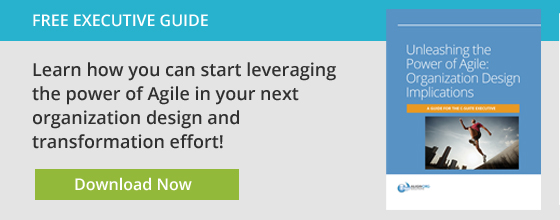In a recent post, we explored the role of the change partner as an essential facilitator who helps alignment leaders initiate and maintain organizational alignment. The change partner not only provides critical feedback and support to the leader, but is also responsible for much of the heavy lifting throughout the transformational change implementation process.
Becoming an effective change partner requires competency in the areas of leadership, organization, and communication, as well as skill sets specific to the organization and the desired change transformation. There is no existing class or curriculum that one can take to prepare completely for this role. While formal training is important, much of what is required must be learned in the trenches, through experience and repetition.
Essential Change Partner Practices
There is a four-fold approach to capability building that can assist in preparing individuals to develop the experiences, skill sets, and wisdom to become competent sounding boards and facilitators of organizational alignment:
1. Change partner skill building
It is important for any potential change partner to develop a consistent set of tools to facilitate transformational change. Approaches and skill sets will vary from one organization to the next. Giving change partners the opportunity to acquire competency in appropriate skills will help ensure that they have the tools needed to support leaders in their change initiatives.
2. Skills practice
There is a vast difference between knowing how to use a tool or apply an approach, and being highly experienced in it. Consider a 16-year-old with a newly acquired driver’s license. While he knows how to drive a car, he hasn’t yet had the opportunity to think through or experience every scenario that might present itself to him once he actually gets behind the wheel. The same is true for change partners. To fulfill their role effectively, they need the opportunity to practice their tools and approaches in real life situations.
3. Integration
Over time, organizations and individuals tend to develop or collect a number of approaches and tools to address many different problems or situations. Before long it’s common to have a whole litany of tools available for use. Part of capability building has to include developing the ability to categorize or integrate different approaches and tools, to ensure that a proper set of tools is being employed for the right kinds of issues. If this doesn’t happen, it’s easy to end up using inappropriate methodologies for the problem at hand. I’ve seen people try to use a particular methodology out of the belief that “these are the tools I have, so these are what I need to use”—the proverbial case of a hammer looking for a nail. Or, “now that I’ve used this tool, let’s use another tool,” without first thinking through whether the original tool might still be appropriate.
A great change partner will avoid getting caught up in the tools and will instead zero in on identifying the problem to be solved, the best approach to solve it, and the most efficient way to use the available tools to help the Alignment Leader® through the situation. This is most often done through a process of diagnosing different problems or issues and determining the best way to handle working through the situation.
Because every organization, scenario and tool set are different, the process requires creative thought to draw on the available tools to reach the desired outcome. Consider how it needs to integrate, and then design or develop an approach that ensures that those getting a new skill set know how it fits with whatever else they have at their disposal. It’s similar to the way a gifted chef might work. He might be trained in certain cuisines, but given the right circumstances he can merge, for example, French with Asian to come up with an innovative fusion blend that suits the occasion perfectly.
4. Coaching
Practice alone is not always enough to become a skilled change partner. Over the years, we have observed that even when someone learns a particular approach, it’s not uncommon to mis-apply it even after having been trained in proper implementation: for example, taking a strategic approach that is meant to benefit the organization as a whole and applying it to an isolated function of that organization (such as finance). Over time, this sort of mis-application of tools and approaches can lead to poor conclusions and organizational misalignment.
Just as the guidance and feedback of an experienced driver can help the novice reach his destination safely and on time, a change partner’s practice can be greatly enhanced by the tutelage or facilitation of someone who is experienced in the approach and/or tools he employs. This can be true even for experienced individuals, since the dynamics and situations pertaining to organizational alignment are constantly changing. An experienced person who can say, “here’s how I’d approach it, here’s how you can adapt and adjust this tool for this situation, here’s the kind of outcome you need to get in this situation, etc.” can provide the kind of invaluable wisdom that only comes with great experience. Having access to such a person can help you best utilize and integrate your available tools and methods and significantly improve the process of capability building on an individual level, and results for the organization as a whole.
Editor’s note: This blog was originally published on Aug. 9, 2017. It has since been updated with new content.






